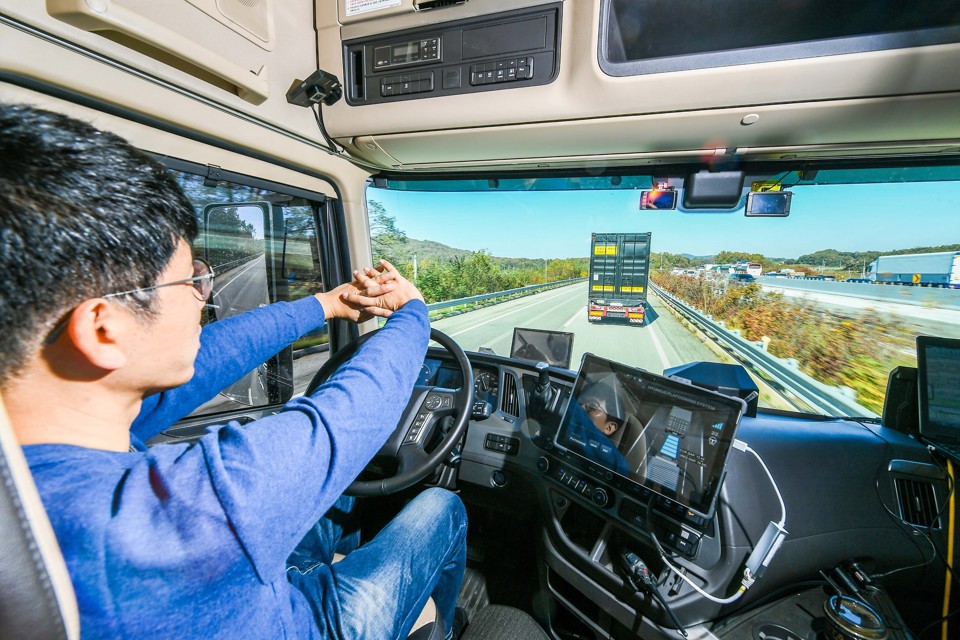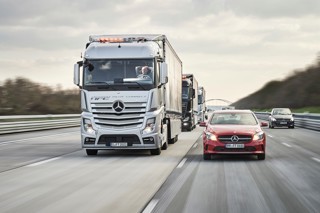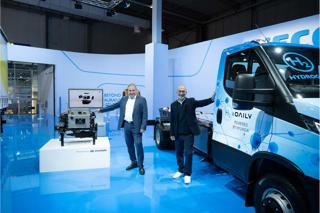Hyundai has successfully conducted its first platooning of commercial vehicles “replicating real-world traffic conditions” on the Yeoju Smart Highway.
The trial involved two trailer-connected Xcient trucks travelling along the 7.7km testbed created by the Korean government for the development of autonomous vehicles.
According to Hyundai, “the highway is constantly populated by vehicles for autonomous driving research, making it quite similar to the conditions of an actual highway”.
Hyundai’s testing displayed vehicle platooning, cut-in/out by other vehicles, simultaneous emergency braking, and V2V (vehicle to vehicle) communication tech. The speed limit was set at 60kph for safety reasons.
Paradigm shift
Jihan Ryu, head of Hyundai Motor’s Commercial Vehicle Electronics Control Engineering Group, said: “We are confident that our industry leading autonomous driving technology in commercial vehicles showcased in this platooning truck demonstration will lead into a revolutionary paradigm shift in the freight and logistics industry.”
Ryu said Hyundai will be sharing its learnings on autonomous driving development between commercial vehicle and passenger car sectors "to expedite level 5 self-driving technology".
Level 5 autonomous driving means there is no involvement from a human driver in any situation in a vehicle.
How it works
The platooning manoeuvre begins when the driver of the following truck approaches the leading vehicle and activates platooning mode.
Upon activation of platooning mode, the following truck maintains a 16.7m distance, with real-time fine tuning based on the leading vehicle’s acceleration and deceleration. The driver does not need to put his/her foot on the accelerator or brakes.
The mode also activates lane keeping technology which means drivers following the lead truck can take their hands off the steering wheel.
With platooning, other vehicles cutting in and out between trucks can also be managed. If a vehicle cuts between the platooning trucks, the following truck automatically extends the gap to minimum of 25m.
When a leading truck makes a sudden emergency stop due to an unexpected situation, the newly technology responds by enabling the following truck to decelerate and stop.
The V2V system applied to both trucks in Hyundai’s demonstration showcased how real time information sharing between platooning vehicles can improve control over acceleration and deceleration, and also incorporate ADAS (Advanced Driver Assistance System) information from various sensors like cameras and radar.
Hyundai’s platooning system also uses real-time frontal video sharing. This displays videos from the lead vehicle so the following driver can see the road ahead, solving limitations of forward vision for trailing drivers.
European trial
In May this year, what was billed as “the first real-world platooning trial” concluded that operating electronically linked trucks on German motorways is “safe, technically reliable and easily applicable in the routine of a logistics company”.
The findings came from a joint project involving logistics company DB Schenker and two MAN trucks.
As part of the research project, sponsored by the Federal Ministry of Transport and Digital Infrastructure (BMVI), professional drivers drove the two electronically linked vehicles on the Autobahn 9 between the Nuremberg and Munich branches of DB Schenker over the course of seven months.
The trucks covered more than 21,000 miles, at a distance of between 15 to 21 meters apart.






















Login to comment
Comments
No comments have been made yet.